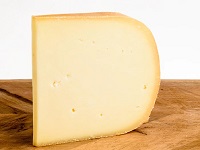Valpolicella Classico (Italy)
Valpolicella is a Valley by Lake Garda in Northern Italy.
The red wine Valpolicella is typically made from the grapes:
Corvina, Corvinone, Rondinella (mandatory),
followed by Molinara and others.
Typical Valpolicella Flavors
Valpolicella is associated with big Cherry notes, Red Berries, Flowers, and Spices. The wines often have a bitter Almond finish, with a Red Cherry note.
Red Cherry |
Black Cherry |
Strawberry |
Blackberry |
Flowers |
Pepper |
Almonds |
Spices |
Valpolicella Profile
Valpolicella is a light wine, with low tannins and high acidity:
| SUGAR: | Dry (3 g/l) |
| BODY: | Light |
| TANNINS: | Low |
| FRUIT: | High |
| ACIDITY: | High |
| ALCOHOL: | 12-13% ABV |
|
Serving Temerature: 12-14°C (54-57°F) | |
Valpolicella Food Pairing
Valpolicella is very food friendly. It pairs well with many types of food. Its fruitiness is perfect with Grilled Food.
Antipasti |
Vegetables |
Ham |
Salami |
Pizza |
Pasta |
Risotto |
Soups |
Hamburger |
Chicken |
Lamb |
Veal |
Excellent Pairings
Italian. Venetian Cuisine.
Antipasti. Ham. Salami. Lardo di Colonnata.
Grilled Vegetables. Spicy , Rich Soups.
Pizza. Pasta. Risotto. Porcini Mushroom Risotto.
Fat Fish. Bacalao. Salmon. Tuna.
Grilled or Roasted Meat. Fowl. Game.
Stews. Braised Lamb. Glazed Pork.
BBQ. Hamburger. Steak. Mix Grill.
Cheeses
Mild Aged Cheese. Asiago. Montasio. Piave.
Veneto Specialities
Veneto Antipasti.
Treviso’s Radicchio Risotto.
Polenta Dishes.
Fresh Pasta with Duck Sauce.
The Ideal Glass for Valpolicella
The Burgundy Glass is for swirling & releasing the wine aromas.

|
The shape of the glass captures and directs the delicate aromas to your nose
and leads the wine to the tip of your tongue for a better reception of the tastes.
The Burgundy glass was designed for the delicate and aromatic red wine Bourgogne Rouge, made from Pinot Noir grapes in Bougogne (Burgundy). |
Valpolicella Cheese Pairing
If You Like Valpolicella
You Will Also Like:
About Valpolicella
There are 3 types of Valpolicella wines: Basic, Classico and Superiore.
The basic Valpolicella indicates light, fragrant wines.
Valpolicella Classico is made from grapes grown in the "Classico" sub-area. The term "Classico" has just a geographical meaning and is not related to the quality.
Valpolicella DOC Superiore is aged at least one year and has at least 12% alcohol.
The Valpolicella Wine Region

Valpolicella is a valley by Lake Garda near Verona in Northeast Italy.
Valpolicella is also a well-known red wine from Veneto. The grapes used in Valpolicella are Corvina Veronese, Rondinella and Molinara.
Valpolicella comes in various styles:
-
Valpolicella DOC the lightest.
Light, fragrant wines produced in a Vino Novello style, similar to Beaujolais Nouveau and released only a few weeks after harvest (out for sale on 30 October). -
Valpolicella Ripasso DOC the boldest.
A Valpolicella Superiore made with both fresh and dried grapes. The grape skins that have been left over from the fermentation of Amarone or Recioto add flavors like baked fruit, cedar, and tobacco to the new grapes. - Amarone della Valpolicella DOCG the king.
Made with dehydrated grapes to add full body, cherry, plum, and pine resin notes. This wine was born out of a mistake:
Recioto was left to ferment too long, resulting in a dry wine that became Valpolicella`s star. -
Recioto della Valpolicella DOCG the sweet.
The historical-traditional sweet wine from this valley, dating back to Roman times.
Region Veneto
The most famous white wines from the region are Soave and the sparkling Prosecco.
The most famous red wines are Amarone and Valpolicella from the Valpolicella Wine Region.
Black Grapes |
White Grapes |

11% Corvina |

27% Glera |

Veneto is home to some incredible DOCG wine regions:
- Amarone della Valpolicella DOCG
- Asolo Prosecco DOCG
- Bagnoli Friularo DOCG
- Bardolino Superiore DOCG
- Colli di Conegliano DOCG
- Colli Euganei Fior d’Arancio
- Conegliano-Valdobbiadene Prosecco DOCG
- Lison DOCG
- Montello Rosso DOCG
- Piave Malanotte DOCG
- Recioto della Valpolicella DOCG
- Recioto di Gambellara DOCG
- Recioto di Soave DOCG
- Soave Superiore DOCG
Soil |
Climate |

Calcareous. |

Mild Continental |












